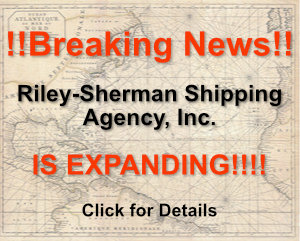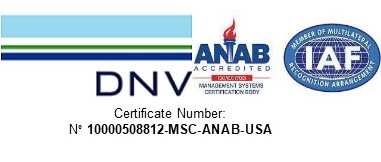U.S. Army Corps of Engineers (USACE) EMERGENCY RESPONSE SALT WATER SILL CONSTRUCTION:
Weeks Marine continues dredging with their cutterhead dredge J.S. CHATRY to build the salt water barrier at Mile 63.8 Above Head of Passes (AHP), today’s report indicates the sill is nearing completion to the present targeted elevation -55 feet (between -55 and -53 feet). Due to the difficulties in evenly achieving that height the USACE allowed Weeks a two foot variance in the construction, the sill is expected to be completed to that elevation over the next 48-hours or so. Upon completion of this first stage, Weeks will move the J.S. CHATRY upriver to resume work on a restoration project using dredged material from the Alliance Anchorage.
The one-way traffic controlled by the Contact Pilot will continue until the buoys are removed and the U.S. Coast Guard officially rescinds the details in the Marine Safety Information Bulletin. The USACE will keep monitoring the situation and if the sill elevation needs to be constructed higher, then the sill building process will resume with a similar configuration and the J.S. CHATRY and equipment returning in the same foot print.
The USACE will monitor the salt water encroachment as the salt water wedge has reached the sill, the impact of the sill will be monitored but the sill may indeed have to be built to a higher elevation.
THE DECISION TO BUILD ABOVE -55 FEET WILL DETERMINE A LOT ABOUT THE POTENTIAL FOR PROMPT ADJUSTMENTS TO MAXIMUM DRAFT RECOMMENDATIONS.
The maximum draft recommendation for the Mississippi River Ship Channel remains 50 feet (Freshwater) to the Huey P. Long Bridge – although a decision to build the sill higher than -52 feet is expected to generate draft restrictions.
Weeks Marine offered the following update this morning:
“On 10.17.22 the Dredge JS Chatry continued a second pass in Cut 2 of the Saltwater Sill borrow area from STA 28+60 – 35+15. Drag Barge was successfully operating on this day removing any material above template limits.
Spill Barge operations are beginning to bring Sill elevations to grade, slow downs in production are expected today as available volume in the template begins to decrease.”
The river stages are forecasted to continue a slow steady fall, with Baton Rouge forecast to reach 2.2 feet and New Orleans forecast to reach 2.0 feet on November 14, 2022. As the river stages recede further the likelihood remains that the salt water wedge will begin to advance upriver.
The Marine Safety Information Bulletin (MSIB) as developed by the U.S. Coast Guard and the Navigation Bulletin released by the U.S. Army Corps of Engineer are both attached.
The channel restrictions detailed in the MSIB are reproduced below:
All vessels are limited to one wav traffic from MM 63.65 to 63.91 AHP confined to a channel soo· wide. The channel follows the Left Descending Bank (LDB) and is marked on its West side by four white buoys with fixed white all-around lights.
- All vessels transiting this zone shall check-in with. and take direction from the Contact Pilot onboard the T/V CAPT SAM 30 minutes prior to arrival on Channel 67.
- All vessels shall transit at their slowest safe speed between MM 63.5 to 65 AHP.
- All vessels anchoring in Alliance Anchorage shall maintain a minimum 2,500’ separation from the J.S. CHATRY. Additionally. the northern most 600′ of the anchorage is closed. Vessels anchored may be required to vacate at the discretion of the Contact Pilot.
- The Contact Pilot is the Coast Guard’s Designated Representative.
- These measures will remain in effect until rescinded/adjusted at a future date.
The one-way traffic for shallow- and deep-draft traffic will be controlled by the Contact Pilot on the CAPT SAM 24-hours until the construction of the salt water sill is completed (MSIB Rescinded).
With You,
Sean
Sean M. Duffy, Sr.
Executive Director
Standing By Channel: (504) 338-3165
Big River Coalition




